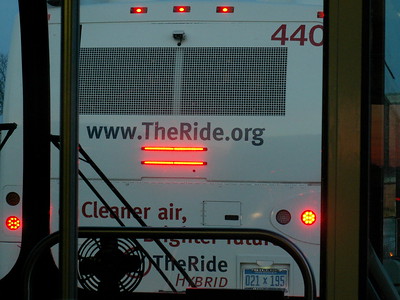A recent study conducted by the Hope Center for Community College and Justice revealed that transportation plays a major role in student success. More specifically, students who have access to heavily subsidized transportation perform better in classes, take more classes, graduate more often and graduate faster than students without subsidized transportation.
The Hope Center worked with DVP Praxis to conduct the study. Researchers looked at students at Rio Hondo College in Whittier, CA. Rio Hondo College serves mostly Hispanic students. Students there were eligible for a special bus pass from the Los Angeles County Metropolitan Transportation Authority. Each pass – which provided unlimited access to the system – cost the student $7. The fee is paid by all Rio Hondo students at the beginning of each semester. The $7 pass, called the Universal College Student Transit Pass (U-Pass), represents a 95% discount from the standard fare.
If you haven’t noticed, transportation is expensive. In fact, it’s the second-highest expense in the average American household. Transportation costs include car payments, insurance, maintenance and repairs, gas, tolls and parking, etc The College Board estimates that students spend as much as 20% of their net income on transportation costs.
So, what does a $7 bus pass do for the community college? It helps ensure that students who enroll return semester after semester. It also means students take more credits, perform better, graduate faster, and are 27% more likely to graduate with an associate degree.
Rio Hondo College serves about 28,500 students. About 10% of them sought out a U-Pass. Most students who requested a U-Pass were female, under the age of 25, first-time college students and receiving financial aid. Based on the number of students at the College, Rio Hondo collects about $200,000 per semester through the fee that funds the transportation program.
Transportation drives student success
The U-Pass program isn’t glamorous. It’s also not that expensive. Early indicators show that it helps retain students. It also gives them the opportunity to take more credits, spend more time on campus, and perform better in their classes.
WCC had a “free” transportation program for students at one point. It’s not currently operational. The difference here is that in Rio Hondo, the $7 pass gets a student on the bus from anywhere to anywhere. There were no restrictions on who can ride the bus or when. It was a step in the right direction.
From the community’s perspective iIt’s also probably a better investment than a spa, convention center or retail outlets.?
Transportation plays a major role in student success on campus. Providing the ability to move around – regardless of the trip’s purpose – helps students immeasurably. In addition, it helps people rcai. As a result of the U-Pass study, next semester all low-income students will receive transportation passes.
Assisting students – helping them overcome barriers – is the key to maintaining and growing a student base. Hotels won’t do that. Conference centers won’t do that. Fitness centers won’t do that either. Focusing on the students and addressing their needs is the only approach necessary to maintain and increase enrollment.
Photo Credit: Rose fire Rising , via Flickr

































